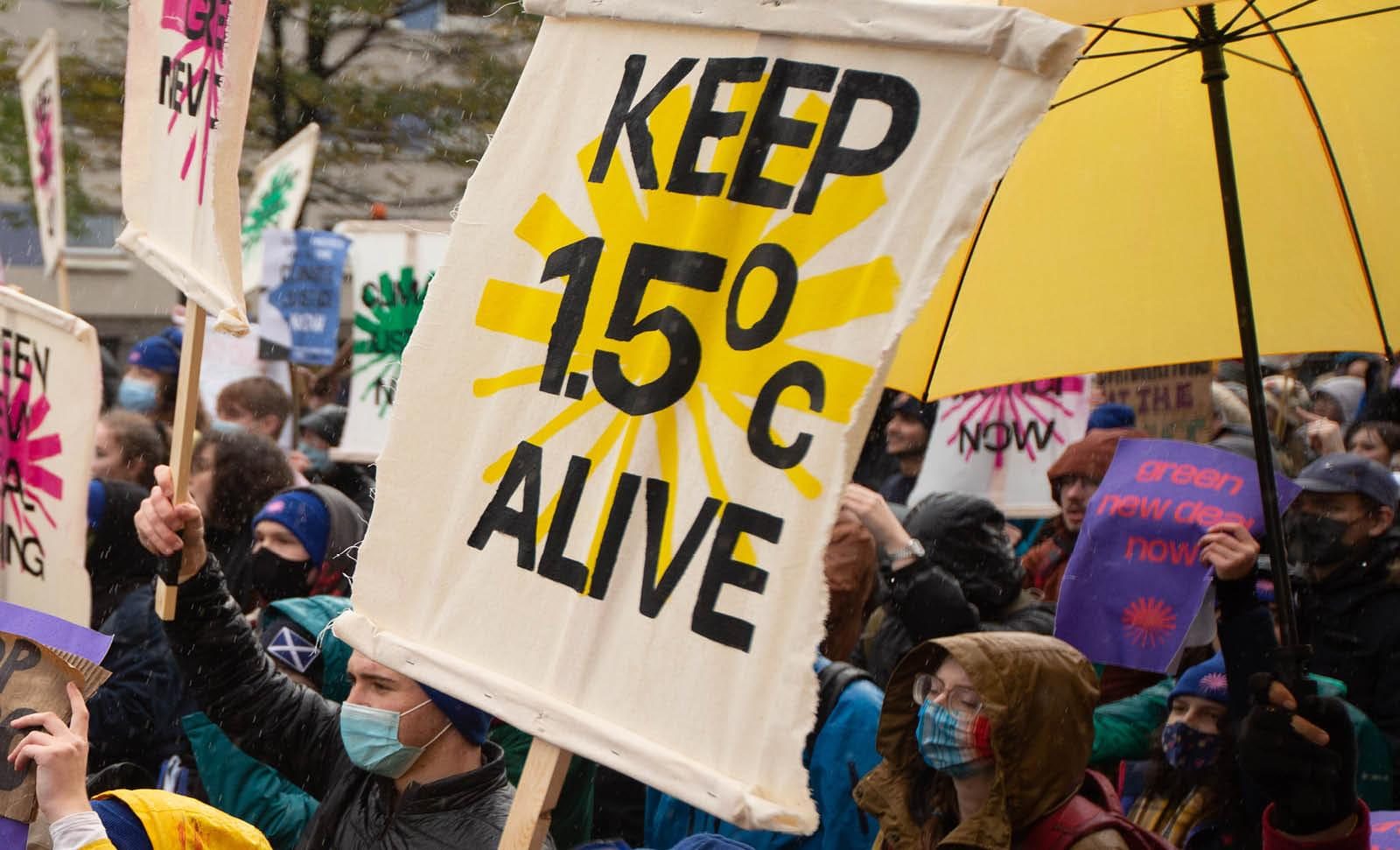
COP26: The road ahead
Nov 19th 2021
Alberto Carrillo Pineda, the SBTi's Managing Director, explains how the promise of COP26 can be realized - and how the SBTi plans to help.
COP26 was a unique opportunity for world leaders to confirm action to meet the goals of the 2015 Paris Agreement, and commit to future action that keeps 1.5°C alive. The outcome - the Glasgow Climate Pact - has been met with praise and criticism, both of which are merited. However, whichever side of the fence you are on, one thing is clear: we must urgently increase climate action to decarbonize our economies at the pace and scale dictated by science.
Here is the Science Based Targets initiative’s (SBTi) position on the challenges and opportunities ahead.
Raising the volume on 1.5°C
1.5°C was given reinforcement at COP26, and this is encouraging. The Glasgow Climate Pact contains much stronger language around this goal compared with Paris, resolving to pursue efforts to limit the temperature increase to 1.5°C. It recognizes that global CO2 emissions must be reduced by at least 45% by 2030 from 2010 levels in order to limit warming to 1.5°C. It also calls on parties to revisit and strengthen their 2030 goals in line with 1.5°C before the end of 2022.
Long-term net-zero ambition is closing the gap on 1.5°C
We have seen a huge increase in ambition when considering long-term net-zero pledges, which now cover 90% of global GDP. And encouragingly, both state and non-state actors are making these pledges: during COP26, it was announced that $130 trillion of private capital from Glasgow Financial Alliance for Net Zero will tackle the climate crisis and aid the transformation to net-zero.
The International Energy Agency estimates that the pledges announced at COP26, including many of the net-zero long-term commitments, if fully implemented, could help limit warming to 1.8°C. While this is still above the threshold of 1.5°C that scientists have identified as critical, it nonetheless represents a significant increase in ambition, if framed and implemented in a robust way.
Given the importance that net-zero can play in ensuring a climate-safe future, there is a growing demand for clarity, transparency and accountability, encapsulated in remarks made by United Nations Secretary-General, António Guterres:
“There is a deficit of credibility and a surplus of confusion over emissions reductions and net-zero targets, with different meanings and different metrics. That is why we will establish a group of experts to propose clear standards to measure and analyse net-zero commitments from non-state actors.”
This would go a long way in addressing the issue of greenwashing and hollow commitments not backed by action.
The urgency of addressing the short-term ambition shortfall
Commitments to reach net-zero by 2050 are a source of hope. But there is a yawning gap in near-term action. The Global Carbon Project estimates that global carbon emissions have increased by almost 5% in 2021. At the current rate of emissions, in the next 11 years, we will have exhausted our 1.5°C carbon budget. Alarmingly, with current pledges and policies, warming is projected to increase by 2.4°C by the end of the century. This would be a disaster for our livelihoods and ecosystems.
To limit warming to 1.5°C, we must urgently bend the curve on global emissions. If we don’t, the opportunity to protect our planet will slip beyond our grasp.
At the national level, it is critical that countries come back with renewed 2030 ambition, consistent with the Paris Agreement temperature goals, as agreed in the Glasgow Climate Pact. At the sub-national level, it is key that businesses and financial institutions that have committed to reach net-zero emissions bring substance to their ambition by setting near-term science-based emission reduction targets consistent with limiting warming to 1.5°C.
We have more than enough evidence that the corporate sector is ready for this ambition. In the two years before COP26, the SBTi saw more than 1,000 companies across 53 sectors in 60 countries commit to 1.5°C-aligned targets through the Business Ambition for 1.5°C campaign. We are also seeing 1.5°C becoming the norm. In 2021, 75% of all targets approved by the SBTi have been aligned to 1.5°C pathways. And from July next year, we will only accept the highest ambition 1.5°C targets.
SBTi strategic priorities to help deliver on the promise of COP26
Science-based target setting has evolved from a nascent concept in 2015 into a movement covering nearly 20% of the global economy, driving corporate decarbonization across 50 sectors. However, to bend the emissions curve, the portion of emissions covered by 1.5°C-aligned targets need to be scaled up significantly in the near term. We must also strengthen accountability and incentive mechanisms to ensure that targets from corporates and financial institutions ultimately translate into rapid decarbonization in the real economy. To accomplish this, the SBTi is planning to focus on the following strategic priorities on the road to COP27:
- Scaling-up the adoption of 1.5°C-aligned targets in the corporate sector: Despite the rapid growth in the adoption of 1.5°C-aligned targets through Business Ambition for 1.5°C and Race to Zero, a significant gap remains when looking at the most impactful companies across the G20 economies. According to research conducted by the SBTi, only 20% of G20 listed companies have near-term climate targets with the ambition needed to deliver on the Paris Agreement. We need to see more companies act with increasing urgency to address the climate emergency.
- Ensuring the ambition and credibility of net-zero targets for corporates and financial institutions: The launch of the SBTi Net-Zero Standard in October 2021 addresses the need for a common, robust and science-based understanding of corporate net-zero targets, allowing companies to translate long-term ambition into targets in line with the latest science. A net-zero foundations paper for financial institutions is also in the public consultation stage. This marks the beginning of the development of a net-zero standard for financial institutions, which will follow the same inclusive, multi-stakeholder process taken to develop the net-zero corporate standard. The new standard for financial institutions is expected to launch early in 2023.
- Creating a robust accountability framework for science-based targets: In early 2022, we will kick-start a process to develop a Monitoring, Reporting, and Verification (MRV) standard for science-based targets. This will provide a clear and standardized framework to assess and independently verify the progress of companies and financial institutions setting science-based targets.
The blueprint to address the climate crisis is clear. As stated by Antonio Guterres, the Secretary General of the United Nations “Every country, city, and company must decarbonize by 2050 or earlier – with verifiable and aligned 2030 targets, credible and clear measures, and maximum urgency”. The call to action cannot be clearer: we need to continue to accelerate the adoption of science-based and robust climate targets, and turn the momentum that built for COP26 into actions that will help us ensure a clean, secure and prosperous future.



